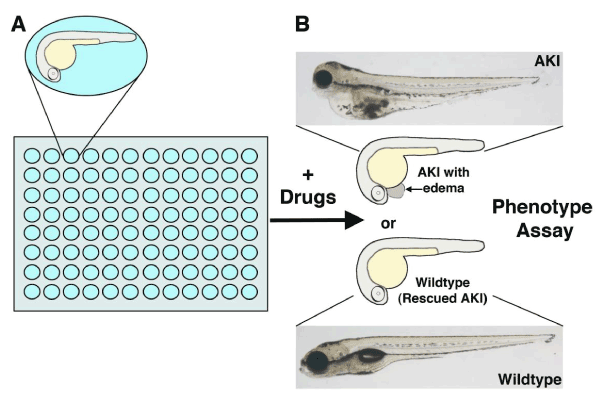
 |
| Figure 2: Experimental strategy for using chemical genetics with the zebrafish embryo to screen for AKI-relevant therapeutics. (A) Zebrafish embryos are arrayed in 96-well plates (or other multi-well plates) and exposed to drugs in a temporally-controlled fashion during development, in which the researcher adds the drug at the time of interest. (B) Embryos are examined for subsequent phenotypic alterations, such as the rescue of edema associated with AKI. Zebrafish embryos are optically transparent, and develop minimal pigmentation by 3-5 days of development, which facilitates the visualization of internal organs. Compared to a wild type embryo (bottom), an embryo exposed to gentamicin (top) develops AKI symptoms that include pericardial edema, seen as a swelling around the heart adjacent to the yolk sac. |